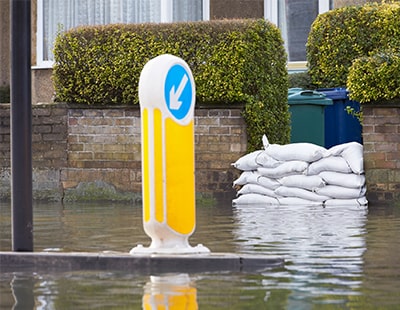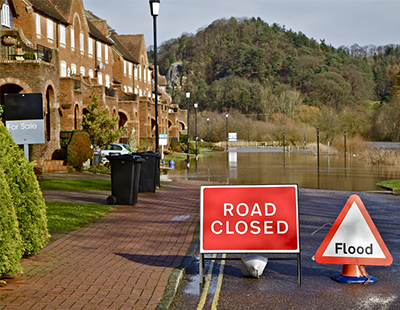Despite this, a YouGov Survey for Know Your Flood Risk found that 67% of residents and homeowners do not know their flood risk.
For the majority of us, our homes will be the most expensive purchase we will ever make, and so due diligence on flood risk is vital. Would you buy a second-hand car that has no MOT or service history?
Depending upon the due-diligence reporting that you obtain for a property, a risk from flooding may be identified. This is no reason to cause instant alarm, it is simply an indication that further understanding is required to define any risk that may exist.
Predictive modelling of various sources of flooding is now widely available. During the early 2000s flood modelling was only available to the public for river and sea flooding.
In 2010, reservoir breach modelling was then released by the Environment Agency. Although this has a lesser statistical probability of occurring, it is still prudent to understand, as was nearly witnessed at Whaley Bridge during July 2019.
Since 2016, the Environment Agency now also includes surface water mapping within its national mapping dataset. There are also other flood mapping sources that can be obtained through private agencies, including the risks that may come from groundwater or canal breaching.
Importantly, it should be noted flood modelling maps are limited by their resolution, and often enough, cannot be relied upon at a property specific level. These are after all undertaken on a national scale.
Understanding the limitations of these maps should be undertaken through seeking professional flood risk advice. The adviser’s role is to translate what the flood mapping is showing to what would likely happen on the ground, at property level.
For instance, flood modelling may not take into account that a property is elevated above the surrounding ground, therefore providing existing resistance to flooding.
Furthermore, surface water modelling only takes limited local drainage networks into account within its modelling, meaning that the actual drainage measures for a property may in fact further reduce the perceived risk.
History has a nasty habit of repeating itself, therefore any evidence of previous flooding at the property or local area should also be sought and correctly understood, including the source, direction, duration and extent.
The property in question may benefit from a recently completed or earmarked flood defence scheme, which would reduce future risk. Your main objective should be to ensure that you have the appropriate knowledge at hand to have confidence that the property in question does not become a future flooding statistic.
The increased coverage within the news of climate change can no longer be ignored either. You should have confidence that the property is future proof in the sense that flood risk would not worsen at that location over time.
Emphasis should be made to ensure local drainage systems are working correctly and are regularly cleaned and maintained. This is a key measure to manage the likely increase in short sharp heavy rainstorms, which will place your drainage to the ultimate test.
Due diligence reporting should also provide information on the likelihood of a property to have difficulty in obtaining adequate flood insurance cover. Again, where initial alarm bells may be indicating a potential issue, you should seek a professional opinion from a specialist advisor.
Insurance may still be fully obtainable, subject to the property owner having evidence of the actual risk via a site survey and appropriate written assessment. The property may be eligible for the Flood Re scheme, designed to make insurance affordable for domestic properties deemed at significant risk of flooding.
It is however worth noting that this scheme is only designed to run for 25 years from 2016, before transitioning into a free market in flood insurance, reflecting the flood risk to a property. It anticipates that homeowners in high flood risk properties will put in place mitigation measures over the 25 years.
Never has there been a more important time to ensure that a property is either resistant or resilient to flooding. The main difference between flood resistance and resilience is that resistance aims to prevent water entering a building, whereas resilience aims to reduce the damage that is done should water enter a building and help speed up the recovery process.
Generally, flood resistance tends to be preferred by the public, however this can only be recommended up to a certain depth to avoid structural damage. It therefore is helpful to understand the depths of any predicted floods.
Understanding the flood risk is the first step to managing the flood risk and being prepared for what the future holds.
Getting the correct advice upfront from an expert will aid in ensuring the correct mitigation measures can be found.
Having assessed the risk and construction style, a specialist should be able to provide recommendations on how best to manage the risk, along with the likely costs of implementing recommendations.
*Simon Crowther is a Civil Engineer and flood specialist working at Flood Protection Solutions Ltd.









.png)









Join the conversation
Jump to latest comment and add your reply
You could try looking at a map and the contour heights. Next stop would be visit to a local's pub and talk to the locals. I've been doing that for the last sixty years at various times. Right now I live on the fens just a few feet above sea level. No problem at all because I used some common sense.
Many years ago I attended a lib dem planning meeting in Aylesbury. I found myself sitting next to the farmer who was selling the land which the council were going to use for new housing, schools, buses etc. He just kept saying quietly, "That land floods" The ony reply he got from the speaker was that they would put in a drain.
Please login to comment